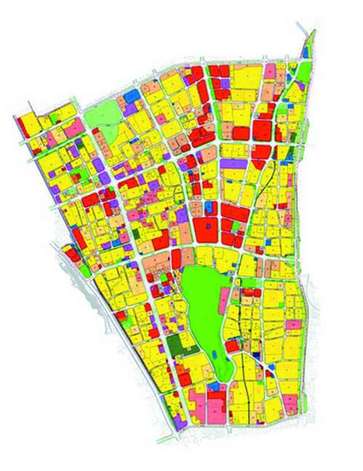Overview of the Urumqi High-tech Industrial Development Zone
( chinadaily.com.cn )
Updated: 2015-12-18
|
|||||||||
Founded in 1992, the Urumqi State High-tech Industrial Development Zone is located in Urumqi, the capital of the Xinjiang Uygur autonomous region. It covers an area of 326 square kilometers and contains a population of 800,000. The zone benefits from a good environment and complete infrastructures.
The zone’s advantages lie in its resources, geographical location, policy, industry, service, financial power and fund-raising ability. It benefits from a variety of preferential policies available for companies that settle down in the zone.
 |
|
A map of the Urumqi State High-tech Industrial Development Zone in the capital of the Xinjiang Uygur autonomous region. [Photo/udz.gov.cn] |
The zone focuses on developing characteristic high-tech industries and facilitating resources conversion based on Xinjiang’s available economic situation. This is done to develop superior technologies and promote industrialization in this ethnic minority area through backwards economics and cultural and technological conditions. The high-tech industrial zone has made reforms and has innovated to seek new ways of developing multiple industrial parks.
It plans to stimulate related industries and integrate all businesses for industrial purposes. These measures have enhanced infrastructure construction and improved systems, mechanisms and service systems. It has continually optimized enterprise environments and attracted investments. The industrial zone has fostered industries with local characteristics. After 10 years of pioneering work, the previous Gobi deserts and farmlands have gradually been developed into engines for Xinjiang’s economic boom.
The Urumqi high-tech industrial zone is located in the eastern part of the new district of Urumqi city. It covers an area of 9.8 square kilometers. It spreads east of the northern riverside road in the east, west of Beijing Road and extends south to Xinyi road and north to Kashi road. It sits near the new district with convenient traffic conditions. With roads in all directions, the high-tech industrial zone is connected with city highways throughout Hebei road, Henan road and Beijing road. Passengers will find it convenient to reach all parts of the city, the airport and the railway station.
 |
|
The central sectionpart of the Urumqi State High-tech Industrial Development Zone in Urumqi, the capital of the Xinjiang Uygur autonomous region. [Photo/udz.gov.cn] |
The downtown area of the Urumqi high-tech industrial zone is ten kilometers away from the Urumqi municipal government; ten kilometers away from the airport; 14 kilometers from the west railway station; and eight kilometers from the planned new Ergong railway station.
The eastern part of the high-tech industrial zone was originally loess barren hills upon gravel stratum. To put in bricks with the loess at the surface layer, brickyards have dug ground rolls-and-swells. The quarter will be transformed when the loess is used up. Most of the western part of the industrial zone is covered by arable lands, featuring flat terrains that are fit for exploration. Under the overall plan of the city, the commercial and financial plaza and the diamond mall will lead construction of the industrial zone. They will prop up the zone and accelerate the city’s overall plan. Xinjiang’s branch of the Chinese Academy of Sciences will be established in western part of the industrial zone to facilitate transforming science and technology research into actual productivity. In brief, the high-tech industrial zone enjoys superior external conditions.
 |
|
The northern section of the Urumqi State High-tech Industrial Development Zone in Urumqi, the capital of the Xinjiang Uygur autonomous region. [Photo/udz.gov.cn] |





